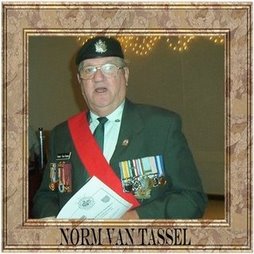 Click on Picture for larger Print
Click on Picture for larger PrintWe believe th Queen's Own Rifles can be very proud of the part they played in the Korean War after the Cease Fire.
 The flags that the Canadians served under at that time in Korea were the Canadian Red Ensign and the Korean Flag
The flags that the Canadians served under at that time in Korea were the Canadian Red Ensign and the Korean Flag Badges, Flashes and the putting together of the above plaque was done by Norm Van Tassel and presented to the 283 ANAVETS for display on the Korea Wall in their Unit.
Canadian Forces Participation in the United Nations Operations,
Korea, 1950-1953 - 1956
Royal Canadian Navy (RCN)
HMCS Athabaskan
HMCS Cayuga
HMCS Sioux
HMCS Nootka
HMCS Huron
HMCS Iroquois
HMCS Crusader
HMCS Haida
Canadian Army
Lord Strathcona's Horse (Royal Canadians)
2nd Field Regiment, Royal Canadian Horse Artillery (RCHA)
1st Regiment, Royal Canadian Horse Artillery (RCHA)
81st Field Regiment, Royal Canadian Artillery (RCA)
The Corps of Royal Canadian Engineers (RCE)
The Royal Canadian Corps of Signals
The Royal Canadian Regiment (RCR)
2nd Battalion 1st Battalion 3rd Battalion
Princess Patricia's Canadian Light Infantry (PPCLI)
2nd Battalion 1st Battalion 3rd Battalion
Royal 22e Regiment (R22eR)
2nd Battalion 1st Battalion 3rd Battalion
The 2nd Canadian Guard
The RHC (Black Watch)
The 2 QOR of C
The 2 QOR of C
The Royal Canadian Army Service Corps (RCASC)
The Royal Canadian Army Medical Corps (RCAMC)
The Royal Canadian Dental Corps
Royal Canadian Ordnance Corps
The Corps of Royal Canadian Electrical and Mechanical Engineers (RCEME)
Royal Canadian Army Pay Corps
The Royal Canadian Postal Corps
The Royal Canadian Army Chaplain Corps
The Canadian Provost Corps
Canadian Intelligence Corps
Royal Canadian Air Force (RCAF) No. 426 (Thunderbird Squadron)
(in addition, 22 RCAF pilots flew with the U.S. Fifth Air Force)
Please Note:
7000 more troops served in Korea after the cease fire from the 27 Jul 1953 until 1955 when the last Canadian Regiment came home. There were also support services that remained in Korea until 1956.


No comments:
Post a Comment